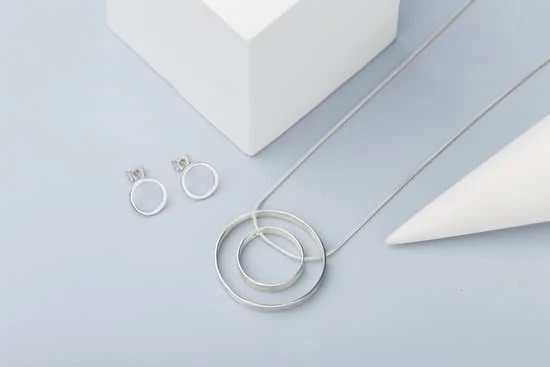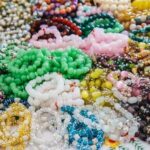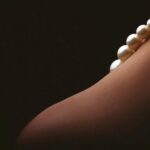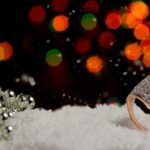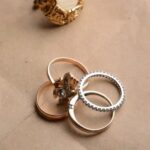Diamond jewelry is often considered a symbol of beauty, luxury, and love. However, with an increasing number of imitation stones flooding the market, it has become crucial for consumers to be able to tell if diamond jewelry is real. Authentic diamond jewelry holds not only significant monetary value but also sentimental importance. In this article, we will explore various methods and tests that can help you determine the authenticity of diamond jewelry.
Understanding the 4Cs – cut, color, clarity, and carat weight – is essential when evaluating a diamond’s quality. These factors influence the stone’s appearance and value. By gaining a basic understanding of the 4Cs, you can make more informed decisions when purchasing or assessing diamond jewelry.
There are several initial indications of authenticity to look out for when evaluating diamond jewelry. The brilliance and fire exhibited by genuine diamonds are unmatched by imitations. Additionally, the smoothness and hardness of a diamond can provide valuable clues about its genuineness. By performing simple tests such as the touch test or fog test, you can easily distinguish real diamonds from imitations based on their physical properties.
In the following sections of this article, we will delve deeper into specific methods and tests that can aid in identifying real diamond jewelry. We will discuss techniques such as weighing the carats, using UV light to reveal clues of authenticity, and seeking professional advice from certified jewelers or gemologists. By arming yourself with knowledge about these techniques, you will be well-equipped to confidently identify authentic diamond jewelry while avoiding common signs of imitation pieces.
Understanding the 4Cs
When it comes to determining the authenticity of diamond jewelry, understanding the 4Cs is essential. The 4Cs refer to color, clarity, cut, and carat weight. These four characteristics are the standard grading system used by professionals to assess a diamond’s quality and value. By familiarizing yourself with the 4Cs, you can gain valuable insights into how diamonds are evaluated and make more informed decisions when purchasing diamond jewelry.
- Color: Color is one of the most important factors in diamond evaluation. The Gemological Institute of America (GIA) grades diamonds on a scale ranging from D (colorless) to Z (light yellow or brown). Truly colorless diamonds are rare and highly sought after, making them more valuable. When assessing color, it is important to remember that even slight differences in shade can significantly affect a diamond’s value.
- Clarity: Clarity refers to the presence of any internal or external flaws in a diamond called inclusions and blemishes, respectively. Diamonds with fewer imperfections receive higher clarity grades.
GIA grades clarity on a scale from Flawless (no internal or external flaws visible under 10X magnification) to Included (imperfections visible to the naked eye). It is important to note that most diamonds have some degree of imperfections, but they should not impact the overall beauty or structural integrity of the stone. - Cut: The cut grade determines how well a diamond reflects light, resulting in its brilliance and sparkle. A well-cut diamond maximizes its ability to reflect light back through its top surface. GIA grades cut on a scale ranging from Excellent to Poor. A diamond’s cut affects its overall appearance more than any other factor.
Knowing how these three Cs – color, clarity, and cut – contribute to a diamond’s quality will put you at an advantage when evaluating diamond jewelry for authenticity. However, it is also important to consider the fourth C: carat weight.
Carat weight refers to a diamond’s size and plays a significant role in determining its value. It is crucial to understand that carat weight alone does not determine a diamond’s quality – the other three Cs must be taken into account as well.
By understanding the 4Cs, you will be equipped with a foundational knowledge of diamond evaluation that will help you identify real diamond jewelry. Remember to consider each aspect carefully and not focus solely on one factor. Additionally, it is worth noting that seeking professional advice from a certified jeweler or gemologist can provide further assurance when making your purchase decision.
Assessing Diamond Quality
When it comes to determining the authenticity of diamond jewelry, there are several key indicators to look out for. These initial assessments can give you a good idea of whether the diamond is genuine or not. While they are not foolproof methods, they can serve as a starting point in evaluating the quality and authenticity of a diamond.
One important factor to consider is the clarity of the diamond. Diamonds are formed over thousands of years under intense pressure, and as a result, most diamonds contain some internal imperfections known as inclusions.
These inclusions can be an indication of authenticity, as synthetic or imitation diamonds often lack these natural imperfections. The Gemological Institute of America (GIA) provides a clarity grading scale that ranges from “Flawless” (no inclusions visible under 10x magnification) to “Included” (inclusions visible with the naked eye).
Another key indicator is the color of the diamond. Genuine diamonds come in a range of colors, from colorless to various shades of yellow and brown.
The GIA also grades diamonds on a color scale from D (colorless) to Z (light yellow or brown). It’s important to note that some synthetic diamonds may be created with an artificially enhanced color, so it’s crucial to consult with a professional jeweler or gemologist if you have any doubts about the color authenticity.
Additionally, examining the cut of the diamond can provide further indications of its authenticity. The cut refers not only to the shape of the diamond but also how well it has been crafted. A well-cut diamond should have proper angles and proportions to maximize its brilliance and reflect light effectively. Poorly cut diamonds may appear dull or lackluster when compared to their authentic counterparts.
| Indicator | Authenticity Indicator |
|---|---|
| Clarity | Inclusions visible under 10x magnification |
| Color | Natural range of colors, not artificially enhanced |
| Cut | Proper angles and proportions for maximum brilliance |
While these indicators can provide initial clues about the authenticity of a diamond, it’s important to note that they are not definitive tests. To ensure the accuracy of your assessment, it is recommended to seek the advice and expertise of a certified jeweler or gemologist. These professionals have the knowledge and specialized equipment to accurately evaluate diamonds and provide you with a reliable assessment.
By considering these first indications of authenticity, you can have a better understanding of what to look for when assessing diamond quality. Armed with this knowledge, you can feel more confident in identifying real diamond jewelry from imitations or synthetic alternatives.
The Magnificent Sparkle
When it comes to evaluating the authenticity of diamond jewelry, one of the key factors to consider is its brilliance and fire. A real diamond possesses a unique ability to reflect and refract light, creating an unparalleled sparkle that sets it apart from imitations or lower-quality stones. There are several ways to test the brilliance and fire of a diamond, allowing you to confidently determine its authenticity.
One method to assess a diamond’s sparkle is by observing it under different lighting conditions. Bring the diamond into natural light and explore how it interacts with the surroundings. Genuine diamonds will reflect light in all directions, resulting in a dazzling display of brilliance. Additionally, when you move a real diamond back and forth, you should witness vibrant flashes of color known as “fire.” This phenomenon occurs due to the diamond’s refraction capabilities.
Another way to test for brilliance and fire is through the use of a jeweler’s loupe or microscope. By examining the facets of the diamond closely, you can observe if they’re properly cut and aligned.
Well-cut diamonds will have reflections bouncing off each facet, enhancing their overall sparkle. If you notice any inconsistencies in how light is reflected or if there are dull areas on the stone, it could be an indication that the diamond isn’t genuine.
Furthermore, consider using a tool called a gemstone tester or an electronic diamond tester. These devices measure how well a material conducts heat and electrical conductivity – both properties that genuine diamonds possess in abundance. If the tester indicates that the stone has high thermal conductivity or electric resistance, then it’s likely that you’re dealing with a real diamond.
To summarize, testing for brilliance and fire is an essential step in determining the authenticity of a diamond piece. Whether through visual observation under various lighting conditions or by utilizing specialized tools like gemstone testers, examining these characteristics will help you differentiate between genuine diamonds and imitations.
| Testing Method | Indicator of Authenticity |
|---|---|
| Observing under different lighting conditions | Diamond reflects light in all directions and exhibits vibrant flashes of color (fire) |
| Examining facets with a jeweler’s loupe or microscope | Facets are well-cut, aligned, and reflect light consistently; no dull areas on the diamond |
| Using gemstone tester or electronic diamond tester | Diamond demonstrates high thermal conductivity and electric resistance |
The Touch Test
When it comes to assessing the authenticity of diamond jewelry, one important test that can be performed is the touch test. By feeling the smoothness and hardness of a diamond, you can gain valuable insights into its authenticity.
To begin the touch test, you should start by handling the diamond jewelry with clean hands. This is important to ensure that no oil or dirt interferes with your ability to detect any imperfections in the stone. When you hold the diamond, pay attention to its weight and temperature. A real diamond will feel heavier than an imitation and will often feel cold to the touch due to its high thermal conductivity.
Next, run your fingers across the surface of the diamond. A real diamond will have a smooth texture with no roughness or grittiness. If you notice any abrasions or irregularities on the surface, it may indicate that the stone is not genuine. Additionally, take note of how the diamond feels against other materials. A genuine diamond is one of the hardest substances on earth and should be able to scratch or cut materials like glass.
It’s also worth mentioning that while you’re conducting the touch test, you can also examine any prongs or settings on the jewelry piece. Real diamonds are typically held in metal settings that are secure and well-crafted. cheap materials or poor workmanship could be indicators that the piece is not authentic.
By performing a thorough touch test on your diamond jewelry, you can gain further confidence in identifying its authenticity. However, keep in mind that this test should be used in conjunction with other evaluation methods outlined in this article for a comprehensive assessment of your jewelry’s genuineness.
- Handle the diamond with clean hands
- Notice its weight and temperature
- Run your fingers across the surface
- Examine prongs or settings
- Consider how it feels against other materials
Performing the Fog Test
One popular and easy-to-perform test to determine the authenticity of a diamond is the fog test. This test relies on the fact that diamonds disperse heat quickly, causing moisture or condensation to evaporate immediately when it comes into contact with the surface of a real diamond. On the other hand, imitations or synthetic diamonds tend to hold heat longer, resulting in slower evaporation or fogging.
To conduct the fog test, follow these simple steps:
- Begin by selecting a clean, dry diamond and holding it between your index finger and thumb.
- Breathe on the stone, creating a thin layer of condensation on its surface.
- Observe how quickly the fog disappears. If it evaporates almost immediately, it suggests that you have a genuine diamond. However, if the fog lingers for several seconds before dissipating, it could indicate an imitation or lab-grown diamond.
Remember that while this test may provide preliminary indications of authenticity, it should not be used as the sole method to authenticate a diamond. It is always recommended to consult with a reputable jeweler or gemologist for a professional opinion before making any conclusions.
In addition to performing the fog test, there are several other tests you can conduct at home or in-store to further assess the authenticity of a diamond piece such as assessing its quality based on its brilliance and fire using lighting conditions or feeling its smoothness and hardness with your fingertips. These additional tests, combined with professional advice from experts in the field, will help you gain confidence in distinguishing real diamond jewelry from imitations.
Weighing the Carats
One of the most important aspects of authentic diamond jewelry is its carat weight. Carat weight measures how much a diamond weighs, and it directly affects the value and price of the stone. Therefore, it is crucial to be able to accurately assess the carat weight when trying to determine if a piece of diamond jewelry is real.
To weigh a diamond accurately, jewelers use precision scales that can measure even small increments. It is important to note that carat weight does not necessarily indicate the size of a diamond, but rather its mass. A 1-carat diamond can vary in size depending on its depth and other characteristics. For example, a deep-cut diamond may have more weight concentrated in its bottom and appear smaller than a shallower-cut diamond of the same carat weight.
When assessing the carat weight of a diamond, it is essential to have access to accurate weighing scales and understand how they work. The measurement should be done with care and precision to ensure an accurate reading. Any discrepancies in carat weight could indicate that the diamond may not be genuine or has been tampered with.
In addition to using precise weighing scales, it is important to understand that there are certain measurements that can help determine if a stone’s carat weight corresponds with its physical appearance. These measurements include proportions such as table size, depth percentage, and crown angle. Jewelers often use these measurements alongside carat weight to assess the overall quality and value of a diamond.
The UV Light Trick
Introduction to the UV Light Trick
An important tool in determining the authenticity of diamond jewelry is the use of ultraviolet (UV) light. This technique allows you to uncover hidden clues and characteristics that are not visible to the naked eye. By using a UV light source, you can gain valuable insights into the origins and qualities of a diamond.
Understanding Fluorescence
One key aspect to consider when using the UV light trick is fluorescence. Diamonds with fluorescence emit a colored glow when exposed to UV light. Although it may seem counterintuitive, this characteristic is actually desired by some individuals as it can enhance the beauty of a diamond. However, it’s important to note that not all diamonds fluoresce, and different diamonds will exhibit varying degrees of fluorescence.
When examining a diamond under UV light, if it emits a blue glow, it typically indicates strong or medium fluorescence. On the other hand, if the diamond appears hazy or cloudy, it may be an indication of weak or very strong fluorescence, which could potentially affect its overall appearance.
Distinguishing Natural from Synthetic Diamonds
Another benefit of using UV light is its ability to differentiate between natural and synthetic diamonds. Some lab-grown or synthetic diamonds may exhibit unique patterns under UV light that can help identify them as man-made rather than natural stones. These patterns are often caused by internal growth structures that are distinctively different from those found in natural diamonds.
However, it’s important to consult with a professional jeweler or gemologist before drawing any conclusions solely based on observations made under UV light. They possess the expertise to accurately distinguish between natural and synthetic diamonds by considering various factors such as magnification and additional tests.
Harnessing the power of ultraviolet light can provide valuable information about diamond jewelry that is not otherwise visible to the human eye. Understanding how fluorescence works and being able to differentiate natural from synthetic diamonds are just a few of the advantages of using this technique.
However, it’s important to remember that the UV light trick should be used in conjunction with other methods of authentication and should always be confirmed by a certified professional before drawing any definitive conclusions. With this knowledge, you can confidently navigate the world of diamond jewelry and make informed decisions when purchasing or evaluating real diamonds.
Seeking Professional Advice
While there are several tests and methods you can use to determine the authenticity of diamond jewelry, it is always recommended to seek professional advice from a certified jeweler or gemologist. These experts have extensive knowledge and experience in evaluating diamonds and can provide an expert opinion on the authenticity of your jewelry.
Why Consult a Certified Jeweler or Gemologist?
Certified jewelers and gemologists have undergone specialized training and education to gain expertise in the field of gemstones, including diamonds. They have the necessary equipment and tools to accurately assess the quality and authenticity of diamond jewelry. By consulting with a professional, you can ensure an accurate evaluation and reliable information about your diamond.
The Benefits of Professional Evaluation
One of the key benefits of seeking professional advice is that jewelers and gemologists have access to advanced equipment that can provide highly accurate measurements. This includes instruments like refractometers, spectrometers, and microscopes, which can be used to evaluate various aspects of a diamond’s quality. These instruments enable experts to measure properties such as light performance, color grade, clarity grade, and carat weight with precision.
In addition to their technical expertise, certified jewelers also possess detailed knowledge about different diamond characteristics and grading standards set by organizations like the Gemological Institute of America (GIA). They can explain these grading criteria to you and help you understand how your diamond compares.
Consulting with a certified jeweler or gemologist not only gives you peace of mind but also provides you with important documentation. These professionals can issue certificates or reports that include detailed information about the diamond’s quality, which can be helpful for insurance purposes or when selling your jewelry in the future.
Overall, consulting a certified jeweler or gemologist ensures that you receive accurate information about the authenticity and quality of your diamond jewelry. Their knowledge, experience, and use of specialized equipment make them the most reliable source for evaluating diamonds.
Red Flags
Color Variations
One of the key indicators of fake diamond jewelry is color variations. Real diamonds typically have a consistent color throughout, whether it’s white or in fancy colors like yellow or blue. Fake diamonds, on the other hand, may show noticeable color variations or hints of other colors within the stone.
This can be a result of using low-quality materials or inexpensive gemstone imitations. To determine if the diamond jewelry you’re examining is real, look closely for any irregularities in color and compare it to known authentic diamonds.
Lack of Brilliance and Fire
Diamonds are renowned for their exceptional brilliance and fire, which refers to how well they reflect light and produce rainbow-like flashes. When inspecting a diamond for authenticity, pay attention to how the stone sparkles and reflects light. If you notice a lackluster appearance with minimal sparkle and fire, it could be an indication that the diamond is fake or of poor quality.
In addition to lacking brilliance and fire, fake diamonds may also exhibit an excessive amount of white light reflection instead of colorful flashes. This can suggest that the stone is actually made from materials such as cubic zirconia or glass, which do not possess the same optical properties as genuine diamonds.
Inconsistencies in Carat Weight
Another red flag when evaluating diamond jewelry is inconsistencies in carat weight. Authentic diamonds are generally cut and polished to precision in order to achieve specific carat weights. Therefore, if you come across a piece of diamond jewelry where the weight seems too good to be true considering its size, it’s wise to question its authenticity.
Fake diamond jewelry often tries to imitate larger carat sizes while compromising on the overall quality of the stone. This means that these imitations might appear bigger than their actual carat weight suggests. To verify if a diamond’s carat weight is accurate, it’s recommended to have the piece appraised by a certified jeweler or gemologist who can provide a professional assessment.
By staying vigilant and keeping an eye out for these red flags, you can better equip yourself to recognize common signs of fake diamond jewelry. However, it is important to note that these are just initial indicators and not foolproof methods of determining authenticity. For precise results, seeking the advice of a certified jeweler or gemologist is always recommended.
Conclusion
In conclusion, knowing how to tell if diamond jewelry is real is an essential skill for any consumer. By understanding the 4Cs of diamond evaluation and learning about the various tests and tricks to assess authenticity, individuals can feel empowered and equipped to make informed purchasing decisions. With this knowledge, they can confidently navigate the jewelry market and ensure that they are investing in genuine diamonds.
The importance of authentic diamond jewelry cannot be overstated. Diamonds hold significant monetary and sentimental value, making it crucial to avoid purchasing fake or imitation pieces. By familiarizing oneself with the key indicators of authenticity, such as assessing diamond quality, testing for brilliance and fire, feeling for smoothness and hardness, performing the fog test, weighing carats, using UV light trick, and seeking professional advice from certified jewelers or gemologists, consumers can protect themselves from scams or fraudulent practices.
Recognizing common signs of fake diamond jewelry is also vital in this process. From suspiciously low prices to unrealistic claims about scale or clarity levels, being aware of these red flags enables individuals to question the legitimacy of a piece before making a purchase. Ultimately, armed with knowledge and awareness, consumers can confidently navigate the world of diamond jewelry and ensure that they are investing in authentic pieces that will bring them joy and value for years to come.
Frequently Asked Questions
How can I test my diamond jewelry at home?
Testing diamond jewelry at home can be done through several methods. One option is to use a thermal conductivity tester. Real diamonds conduct heat quickly, so by touching the stone with the tip of the tester and observing how fast it conducts heat, you can get an indication of whether it’s genuine or not.
Another method involves fogging the diamond’s surface with your breath and checking how quickly it clears. Real diamonds disperse heat rapidly, causing the fog to disappear instantly. Additionally, using a magnifying glass or jeweler’s loupe can help examine aspects such as clarity and inclusions that are common in real diamonds.
How to check if a diamond is real?
There are various tests you can perform to determine if a diamond is real or fake. A widely used method is the “water test.” Fill a glass with water and carefully drop the diamond into it. If it sinks to the bottom, there’s a high chance it’s real since diamonds have high density.
However, if it floats or remains near the surface, then it may be fake. Another method involves examining how light reflects off the diamond. Place the stone over a newspaper and observe whether you can read through it; if not, chances are it’s genuine since real diamonds refract light differently compared to imitations.
How can you tell if a diamond chain is real at home?
Assessing the authenticity of a diamond chain at home requires careful observation and some basic knowledge about diamonds. Start by looking for any stampings on the chain that indicate its purity or karat value; authentic diamond chains often bear such markings like 18k or 14k indicating their gold content.
Next, examine any links on the chain closely for wear patterns that might suggest re-plating or worn-off layers – this could indicate that what appears as diamonds could actually be fake stones attached to plated metal links rather than genuine diamonds set within gold settings typical of real chains.

Welcome to my jewelry blog! My name is Sarah and I am the owner of this blog.
I love making jewelry and sharing my creations with others.
So whether you’re someone who loves wearing jewelry yourself or simply enjoys learning about it, be sure to check out my blog for insightful posts on everything related to this exciting topic!

